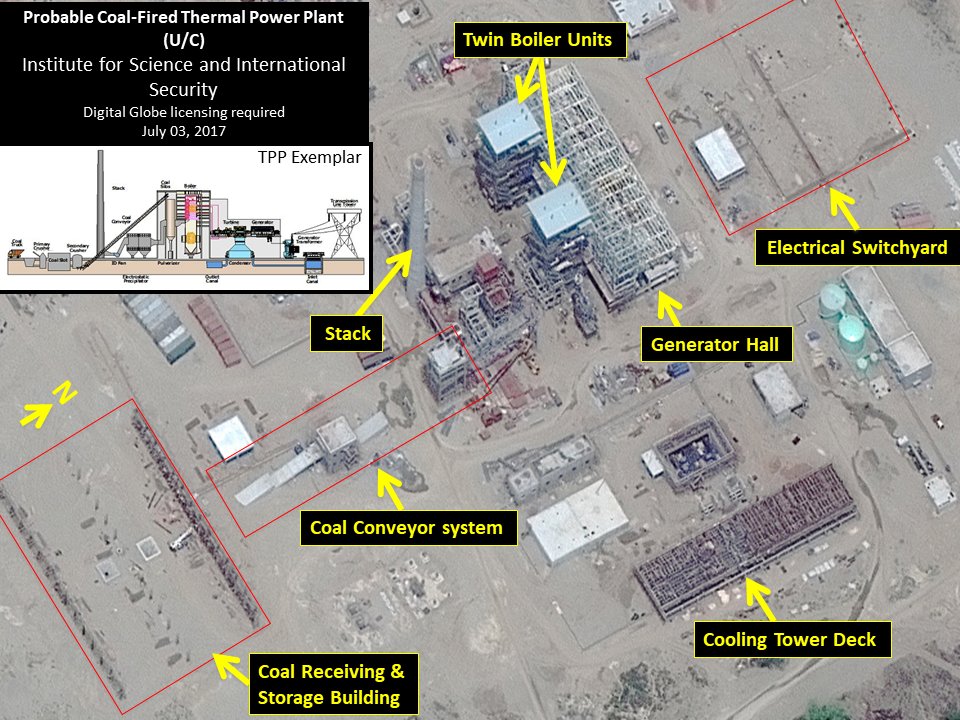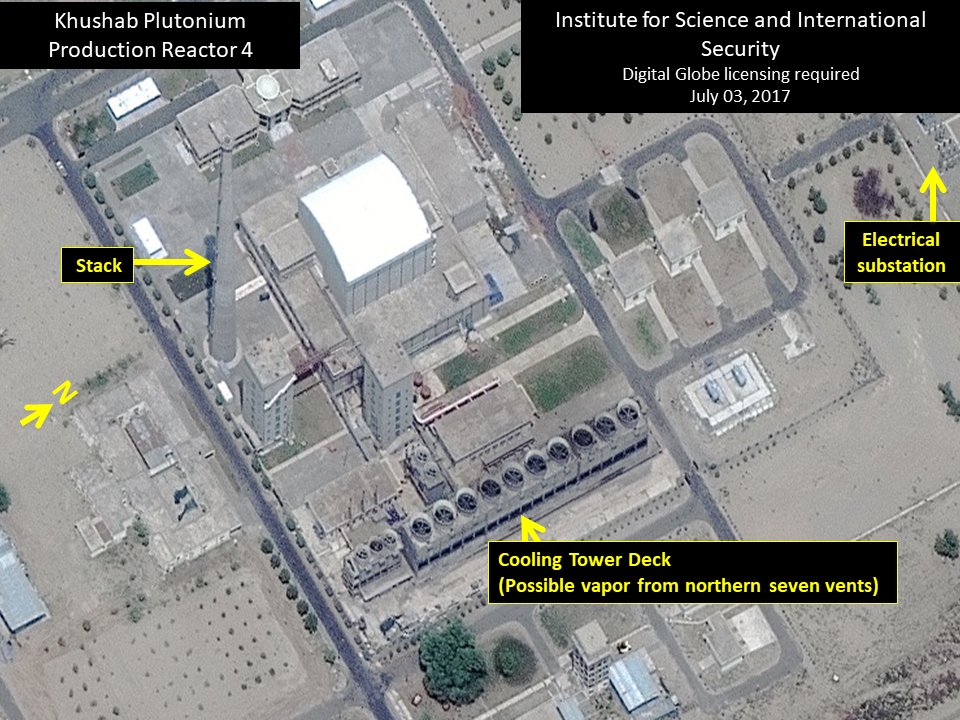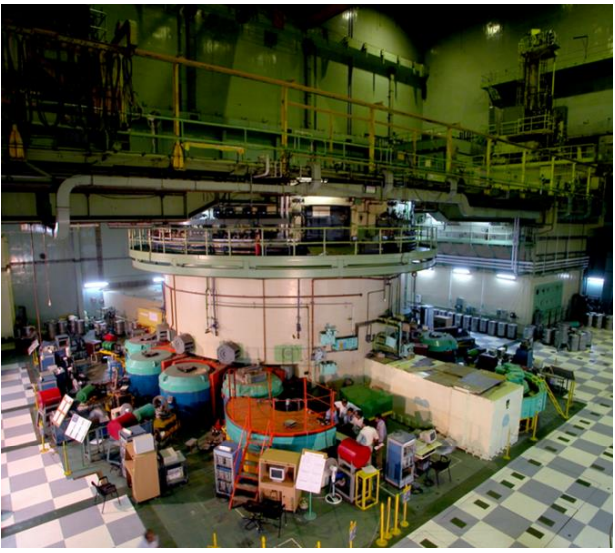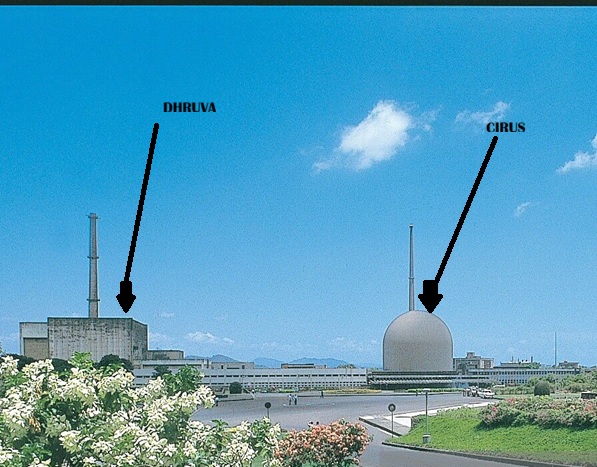Khushab, commissioned in 1998 under the Pakistan Atomic Energy Commission (PAEC), is a cluster of indigenously engineered heavy-water moderated & cooled, natural uranium fueled reactors located ~30 km SW of Jauharabad. 

Reactor Units: 4 (K-I to K-IV)
Estimated Thermal Power: 40–90 MWt each
Moderator/Coolant: Heavy Water (D₂O)
The complex forms the core of Pakistan’s plutonium production line, enabling high-flux breeding for compact, implosion-type warheads.
Estimated Thermal Power: 40–90 MWt each
Moderator/Coolant: Heavy Water (D₂O)
The complex forms the core of Pakistan’s plutonium production line, enabling high-flux breeding for compact, implosion-type warheads.

Each Khushab reactor core is a cylindrical lattice of natural uranium metal rods (U-238 with ~0.7% U-235), housed in zircaloy-clad aluminum process tubes immersed in a D₂O moderator.
Lattice Pitch: ~17.5–18 cm
Average Power Density: 1.0–1.2 MW/m³
Fuel Element: 7–bundle cluster design
η (neutron reproduction factor): ≈ 2.07
The geometry mirrors early CANDU-type reactors, optimized for high neutron economy and internal breeding ratio (B ≈ 0.75).
Average Power Density: 1.0–1.2 MW/m³
Fuel Element: 7–bundle cluster design
η (neutron reproduction factor): ≈ 2.07
The geometry mirrors early CANDU-type reactors, optimized for high neutron economy and internal breeding ratio (B ≈ 0.75).
At rated capacity (~50-90 MWt), Khushab reactors achieve:
Peak Thermal Flux: (1.2-1.5) × 10¹⁴ n·cm⁻²·s⁻¹
Fast Flux: (3–4) × 10¹³ n·cm⁻²·s⁻¹
Annual Burnup: 900-1,100 MWd/tU
Peak Thermal Flux: (1.2-1.5) × 10¹⁴ n·cm⁻²·s⁻¹
Fast Flux: (3–4) × 10¹³ n·cm⁻²·s⁻¹
Annual Burnup: 900-1,100 MWd/tU
Yield: 8-10 kg of weapons-grade Pu (239Pu > 93%) per reactor-year
Heavy-water moderation enables high conversion ratio with minimal enrichment, sustaining continuous reactivity over ~330 effective full-power days/year.
Heavy-water moderation enables high conversion ratio with minimal enrichment, sustaining continuous reactivity over ~330 effective full-power days/year.
Primary loop circulation uses pressurized D₂O at ~10 bar with inlet/outlet ΔT ≈ 30°C.
Flow Rate: ~420 L/s per reactor
Heat Transfer Coefficient: ~5,500 W/m²·K
Secondary loop: Light-water circuit → air-cooled cooling towers
(visible via IR satellite signatures... lamaaaoooo)
Flow Rate: ~420 L/s per reactor
Heat Transfer Coefficient: ~5,500 W/m²·K
Secondary loop: Light-water circuit → air-cooled cooling towers
(visible via IR satellite signatures... lamaaaoooo)
Instrumentation indicates passive decay-heat removal capability up to 2% nominal power via natural circulation key for post-shutdown safety.
Khushab integrates a closed fuel cycle system.
Khushab integrates a closed fuel cycle system.
Heavy Water Production Plant (HWP) using ammonia–hydrogen exchange
Fuel Fabrication Facility for U-metal extrusion and cladding
Spent Fuel Cooling Ponds & Interim Storage
Reprocessing Linkages to Nilore & Chashma Chemical Plants (PUREX-type aqueous separation)


Fuel Fabrication Facility for U-metal extrusion and cladding
Spent Fuel Cooling Ponds & Interim Storage
Reprocessing Linkages to Nilore & Chashma Chemical Plants (PUREX-type aqueous separation)



None of these installations fall under IAEA safeguards, allowing unmonitored plutonium separation.
Net production is roughly ~45kg/yr



Net production is roughly ~45kg/yr




These guys basically got the NRX tech after it was discarded by USA, and co-incidentally CIRUS is also based on NRX.
So Cirus and Khushab are technically cousins 🙂...
But Bruhhh Cirus is imported and Khushabs are domestically produced... lamaaooo
So Cirus and Khushab are technically cousins 🙂...
But Bruhhh Cirus is imported and Khushabs are domestically produced... lamaaooo
Another low pp move these guys did was the time line of K1 and the next 3(K2,3,4).
These guys just copied and made the 4 reactors same... why? coz more reactors soo more Boom Dust.
These guys just copied and made the 4 reactors same... why? coz more reactors soo more Boom Dust.
They did zero research post K1 and just slight modifications, but all 4 reactors are basically copy of each other.
Research reactors? nope... zero... Isotopes? nope... just bombs.
Research reactors? nope... zero... Isotopes? nope... just bombs.
The 1980s Dhruva was years ahead in terms of technology than these late 1990s and even the 2010s K4 reactor.
Pu$$ies basically... no research papers.... bruhhh yk how frustrating it was!!!!
Bitchesssss.
Pu$$ies basically... no research papers.... bruhhh yk how frustrating it was!!!!
Bitchesssss.

• • •
Missing some Tweet in this thread? You can try to
force a refresh







